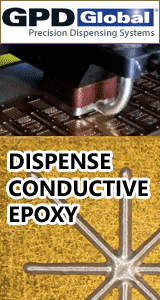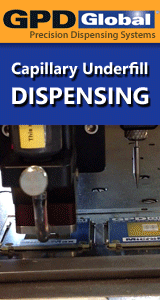Printed Circuit Board Assembly & PCB Design Forum
SMT electronics assembly manufacturing forum.
- SMTnet
- »
- Electronics Forum
- »
- Info on OSP PCB�s
Info on OSP PCB�s
![]() I would be very interested in informations on OSP (organic s...
- Jun 01, 2001
by
I would be very interested in informations on OSP (organic s...
- Jun 01, 2001
by
![]()
![]() I've had good and bad experiences with OSP's. First of all,...
- Jun 01, 2001
by
Justin
I've had good and bad experiences with OSP's. First of all,...
- Jun 01, 2001
by
Justin
![]()
![]()
![]() You aren't going to post our stuff on your "Hey, I'm the wiz...
- Jun 05, 2001
by
davef
You aren't going to post our stuff on your "Hey, I'm the wiz...
- Jun 05, 2001
by
davef
![]()
![]()
![]() Since you brought it up, Dave, I did check your math. Looks...
- Jun 06, 2001
by
genny
Since you brought it up, Dave, I did check your math. Looks...
- Jun 06, 2001
by
genny
![]()
![]()
![]() pfew!!!
...
- Jun 06, 2001
by
davef
pfew!!!
...
- Jun 06, 2001
by
davef
![]()
![]()
![]() Thanks a lot Dave.
I think I will stay away from OSP.
...
- Jun 14, 2001
by
B. S. Bentzen
Thanks a lot Dave.
I think I will stay away from OSP.
...
- Jun 14, 2001
by
B. S. Bentzen
![]()
![]()
![]() Aw, don't be such a baby!!! ;-)
It's a blank of a lot ch...
- Jun 14, 2001
by
davef
Aw, don't be such a baby!!! ;-)
It's a blank of a lot ch...
- Jun 14, 2001
by
davef
![]()
![]()
![]() OK...I'm hooked on this subject. Were changing from NiAu to ...
- Apr 22, 2003
by
OK...I'm hooked on this subject. Were changing from NiAu to ...
- Apr 22, 2003
by
![]()
![]() Over time, copper in the via will form an oxide with oxygen ...
- Apr 23, 2003
by
davef
Over time, copper in the via will form an oxide with oxygen ...
- Apr 23, 2003
by
davef
![]()
![]()
![]() Let me see if I got this right. The OSP in un-plugged vias w...
- Apr 23, 2003
by
Let me see if I got this right. The OSP in un-plugged vias w...
- Apr 23, 2003
by
![]()
![]() Those copper "shadows" surrounding the solder on your pads, ...
- Apr 23, 2003
by
davef
Those copper "shadows" surrounding the solder on your pads, ...
- Apr 23, 2003
by
davef
![]()
![]()
![]() Contact ACI where they have done tons of research on this. 6...
- Apr 24, 2003
by
CAL
Contact ACI where they have done tons of research on this. 6...
- Apr 24, 2003
by
CAL
![]()
Brian Sloth Bentzen
- SMTnet
- »
- Electronics Forum
- »
- Info on OSP PCB�s







